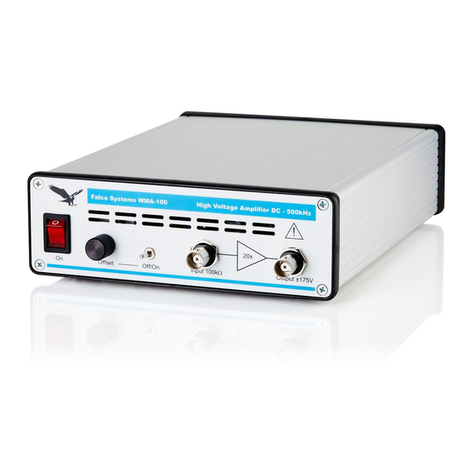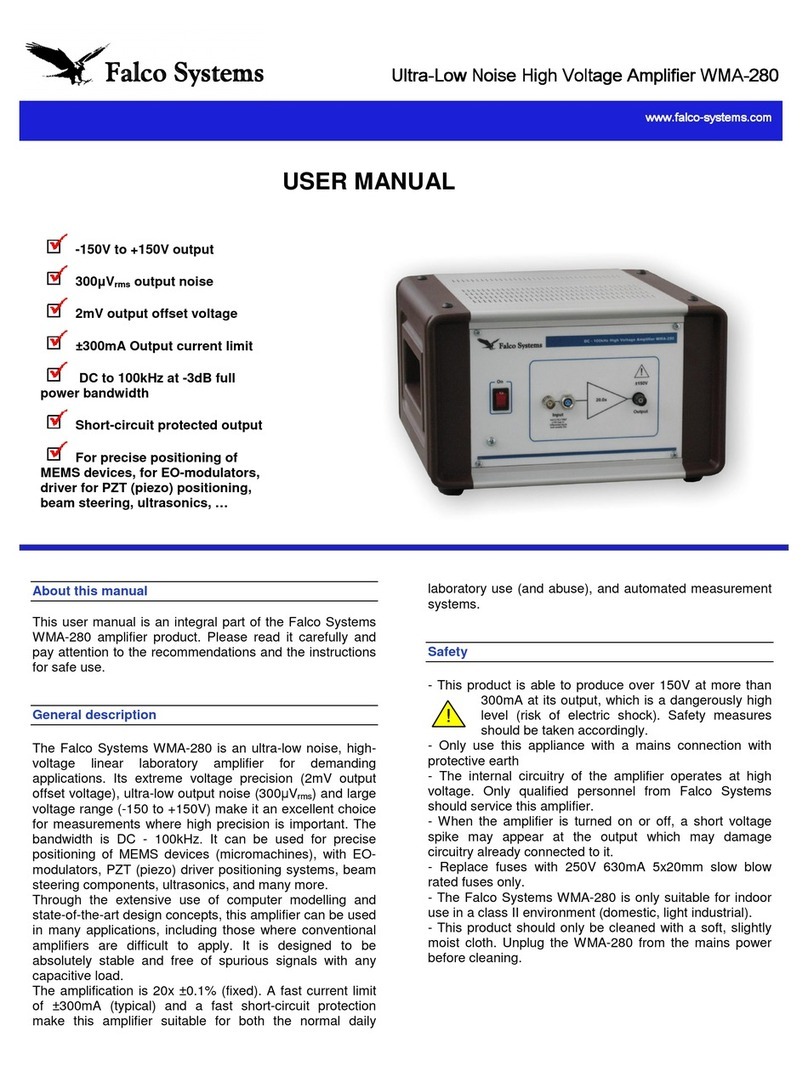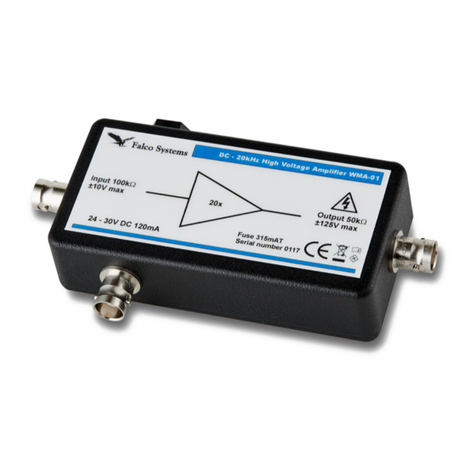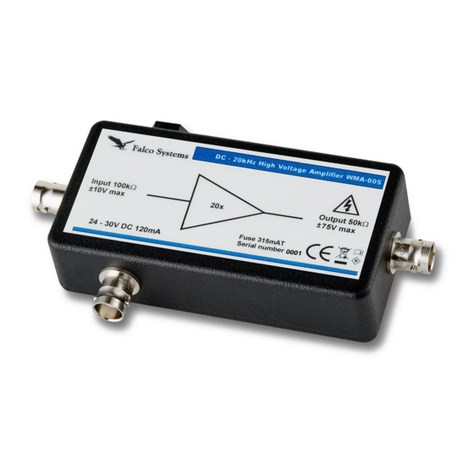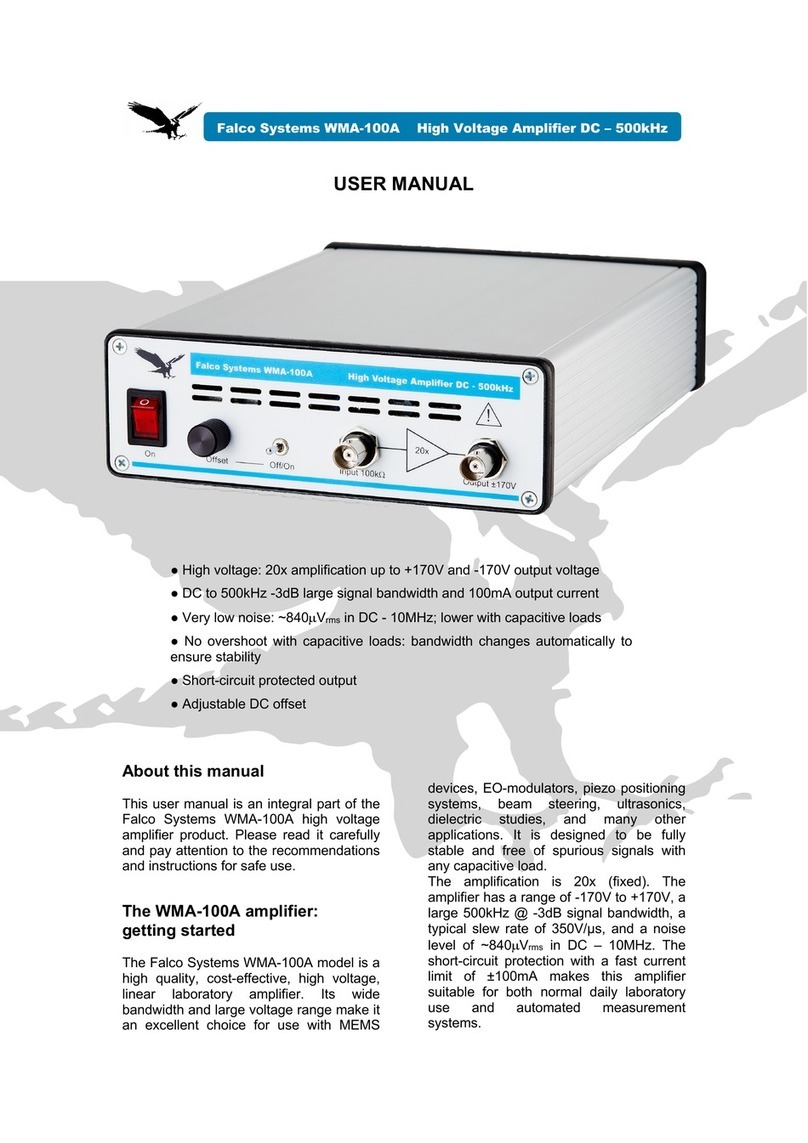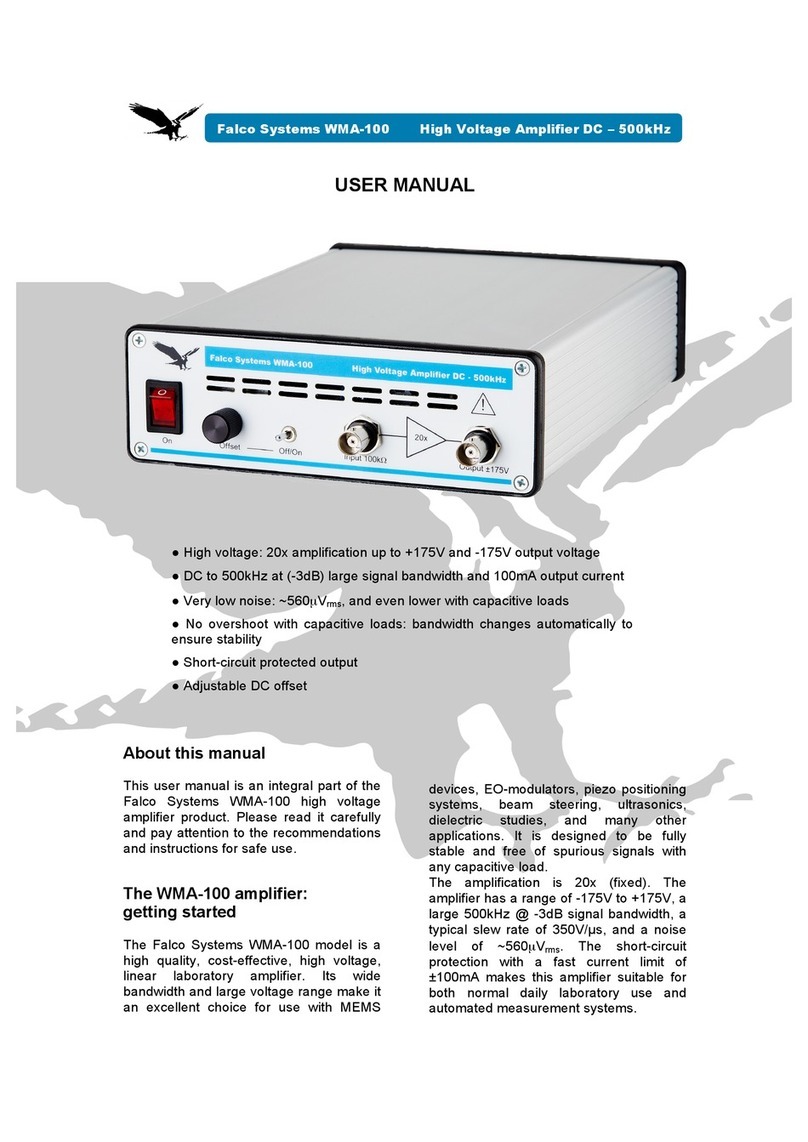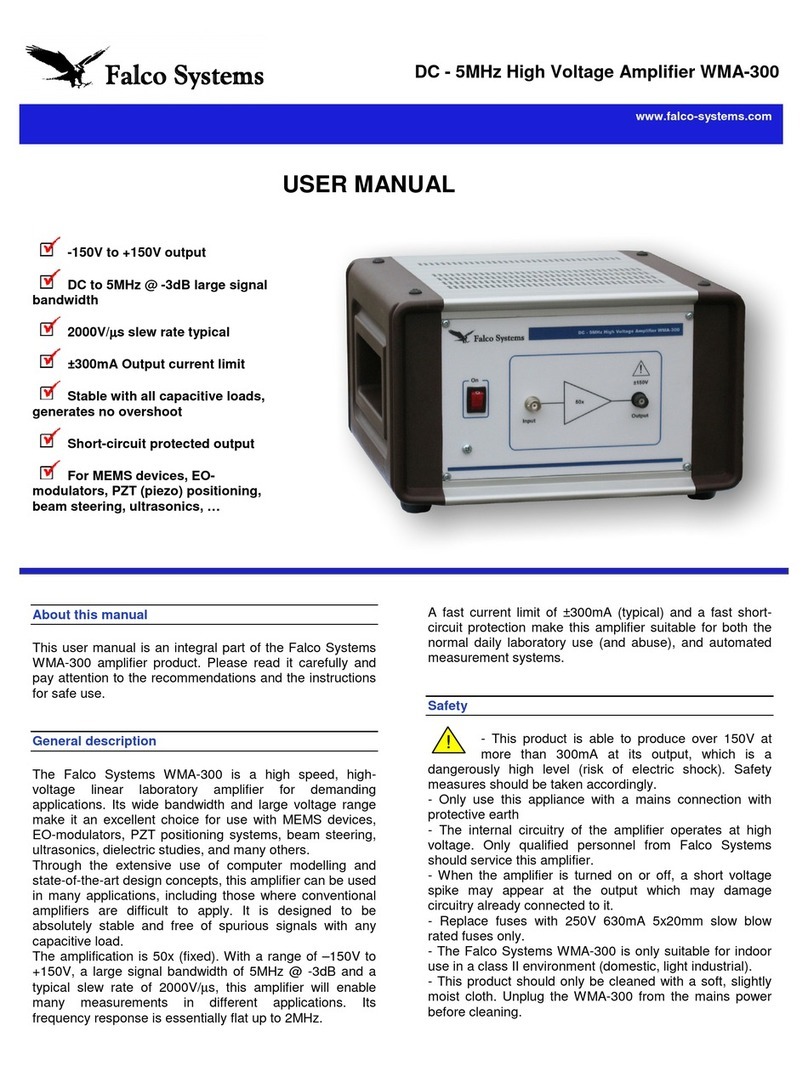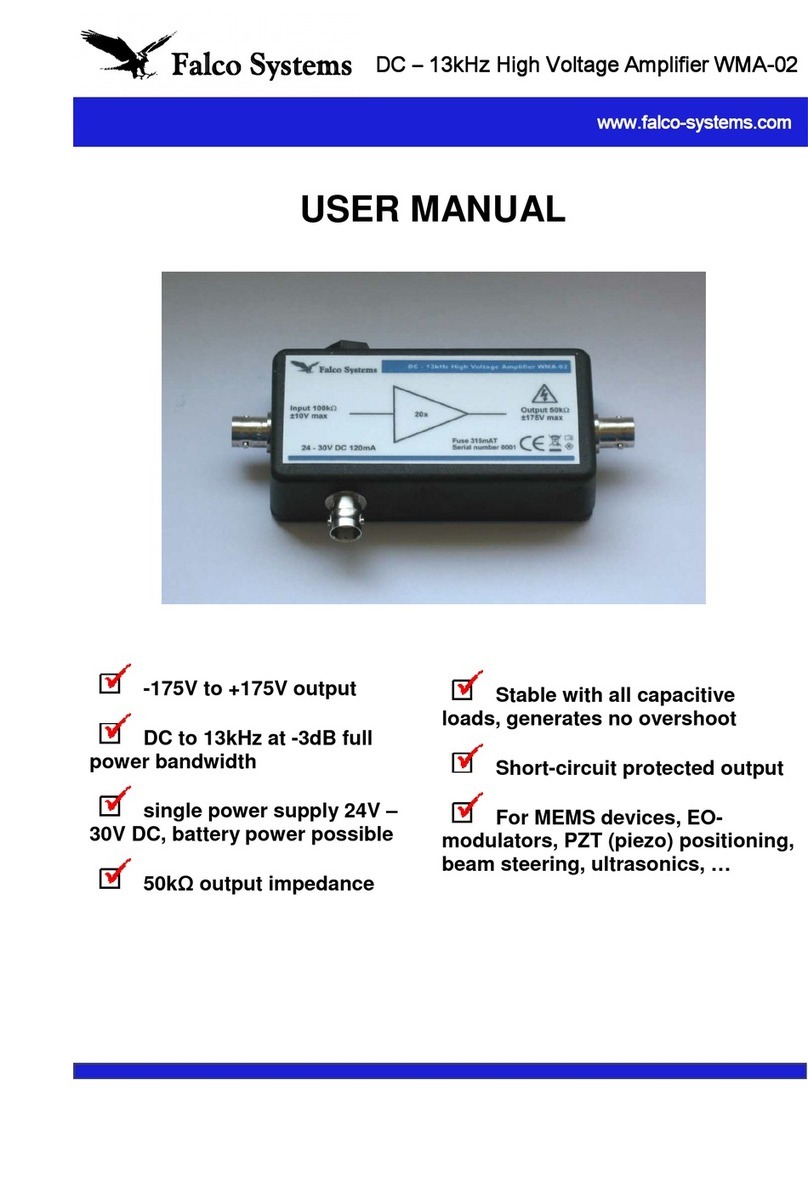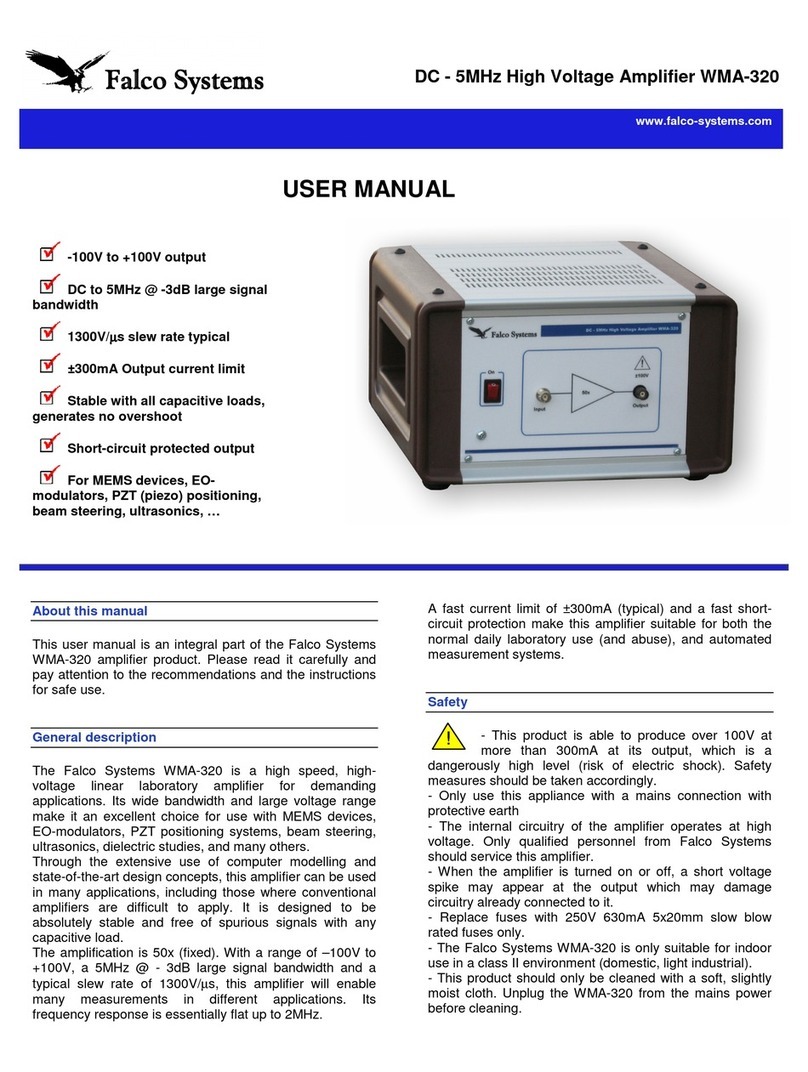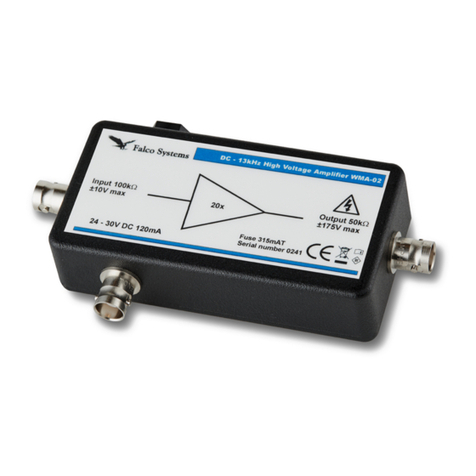
enable many measurements in different
applications. Its frequency response is
essentially flat up to 2MHz.
A fast current limit of ±300mA (typical) and
a fast short-circuit protection make this
amplifier suitable for both the normal daily
laboratory use, and for automated
measurement systems.
Safety
- This product is able to produce over 150V
at more than 300mA at its output, which is
a dangerously high level (risk of electric
shock). Safety measures should be taken
accordingly. This is indicated by the sign
above the output connector of the
amplifier.
- Only use this appliance with a mains
connection with protective earth
- The internal circuitry of the amplifier
operates at high voltage. Only qualified
personnel from Falco Systems should
service this amplifier.
- When the amplifier is turned on or off, a
short voltage spike may appear at the
output which may damage circuitry already
connected to it.
- Replace fuses with 250V 630mA 5x20mm
slow blow rated fuses only.
- The Falco Systems WMA-300 is only
suitable for indoor use in a class II
environment (domestic, light industrial).
- This product should only be cleaned with
a soft, slightly moist cloth. Unplug the
WMA-300 from the mains power before
cleaning.
Detailed properties of the WMA-
300 high voltage amplifier
Input protection
A high-speed amplifier like the WMA-300
can never be made fully insensitive to
input overload conditions, as this would
limit the performance of the amplifier to an
unacceptably low level. However,
compared to other circuits, the input is
protected extremely well by a combination
of a high-power 50Ω impedance and diode
protection for extreme overload conditions.
It can even withstand connecting the
output to the input for some time, which
may accidentally happen in a lab when
cables are going everywhere.
For normal operation, input voltages
should remain in the -3V to +3V range,
resulting with an amplification of 50x in an
output voltage swing of -150V to +150V.
Above 3V (-3V), the input protection
diodes will limit the voltage fed to the
amplifier.
Above 30V (-30V) at the input, the
amplifier may be permanently damaged if
the current of the source is not limited. The
output can be connected to the input
because the current limit of the amplifier
will cut back the voltage to a level that can
be managed by the input.
Never apply more than +30V (-30V) to the
amplifier input!
Output protection
The WMA-300 has been designed to be
fully stable with all capacitive loads. It has
been optimized for its step-response, but is
also a very good linear and sine-wave
amplifier.
Instability under capacitive loading
conditions is a common problem of high-
speed negative feedback amplifiers on the
market, often resulting in unwanted
overshoot voltages, and, in extreme cases,
oscillations (check the respective manuals
and datasheets for details). In the WMA-
300, this problem has been solved by a
clever dual feedback system. No significant
overshoot occurs at any capacitive load.
Overloading or short-circuiting this amplifier
will not break down the amplifier, due to the
extremely fast current limiting circuit that
has been employed.
Although the amplifier cannot be damaged
by a short-circuit condition or capacitive
loading, two situations should be avoided:
- Connecting a charged capacitor
- Using high inductance values (coils)

